Greetings from all of us at GCF and we are excited to bring you our latest update from our Adopt-a-Giraffe programme.
When you last heard from us, we had hoped that by this time we would be at the other end of the COVID-19 pandemic and working towards the “new normal”. Well, that is not quite the case, but there is for hoping!
We hope you and your loved ones are well and safely navigating these crazy times. Like every country, Namibia has gone through several stages of lockdown and precautionary measures. At the GCF home base in Windhoek, our team continues to work in the office, remotely from home, and even more remotely in the vast landscapes of Northwest Namibia. Much to our surprise we seem to be busier than ever at the moment!
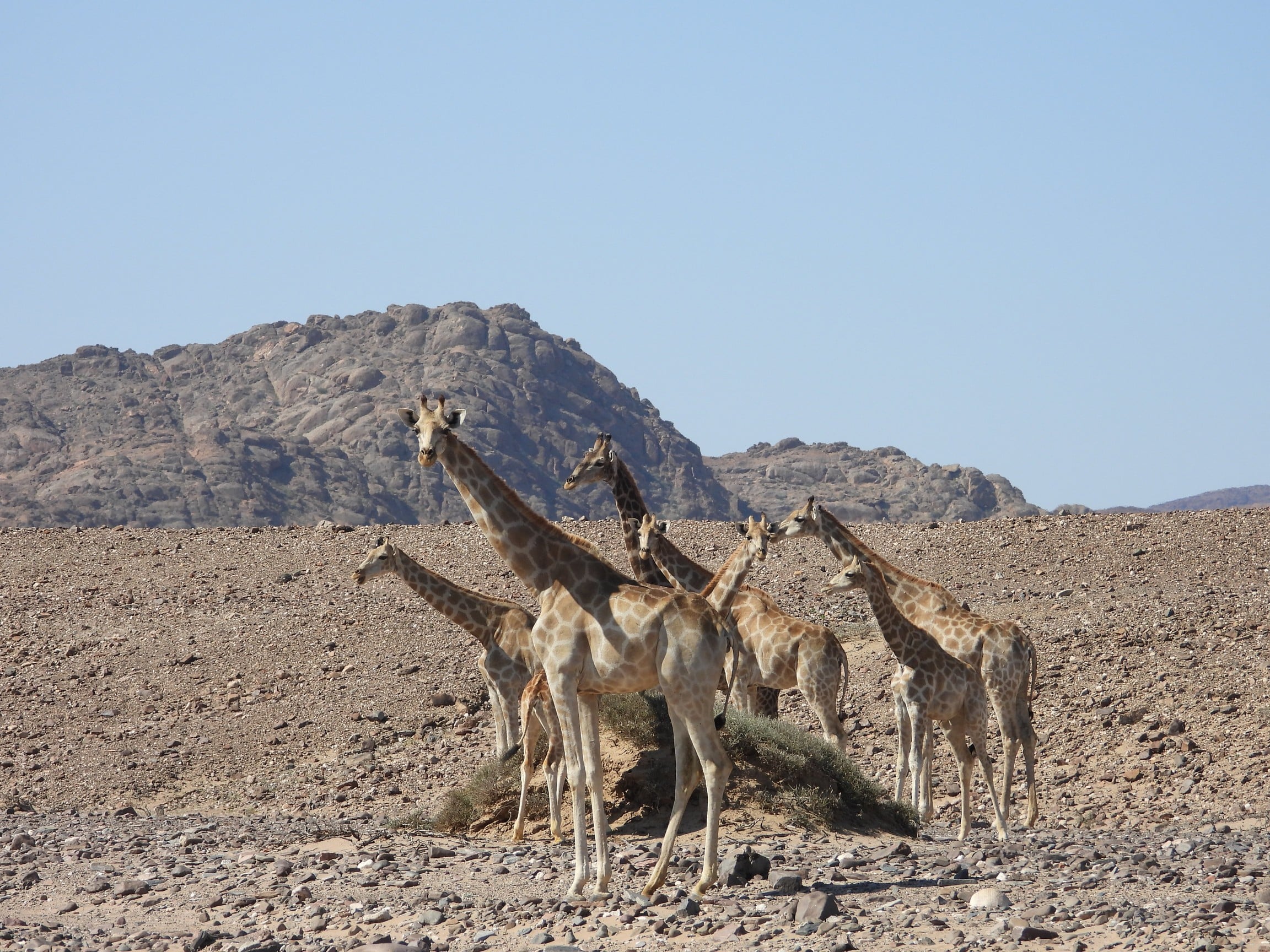
While working from home, our GCF Directors had time to think creatively of ways to continue GCF’s work under lockdown conditions and with all the travel restrictions. While their normally rather busy international travel schedule has come to an abrupt halt, we are putting more focus on working in Namibia. As such, we have started with a Namibia-wide giraffe DNA collection to determine giraffe taxonomy in the country. We suspect that most giraffe are Angolan giraffe, a subspecies of the Southern giraffe, but with giraffe being moved regularly by game dealers, this might not be correct. The information collected in this study will help the Namibian government, conservancies, and private landowners make informed decisions about giraffe conservation management as well as provide up-to-date information to the tourism industry and other interested parties about giraffe in the country. We should also point out that we have initiated similar DNA sampling projects in South Africa and Zimbabwe, where we work with local partners on data collection while international travel is restricted – a clear case of ‘if handed lemons, make lemonade’. These important programmes were always on our long to-do list but have become reality as there was opportunity – and what else is there to do?!
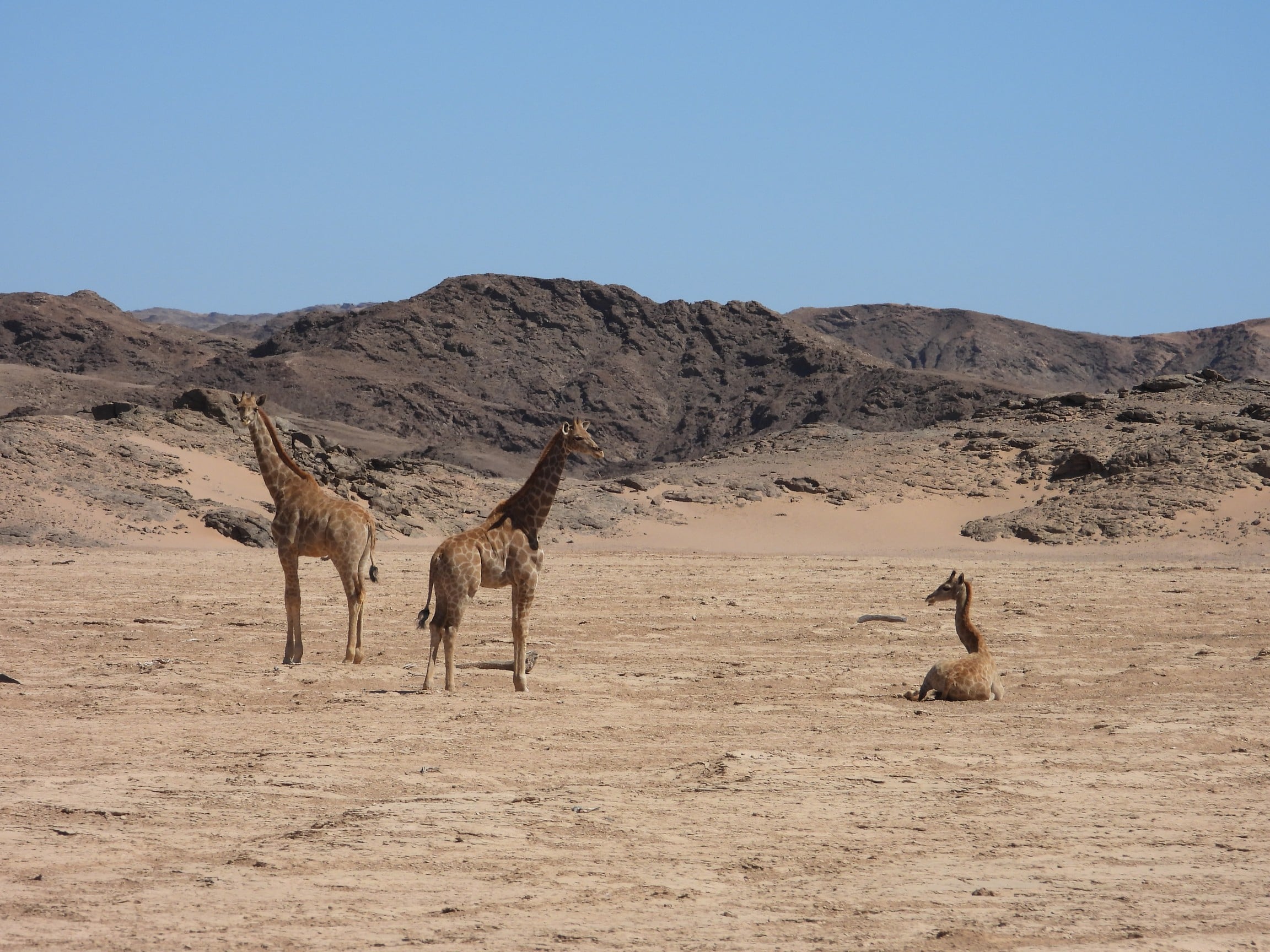
As part of our focused initiatives in Namibia, GCF facilitated the move of 30 Angolan giraffe in Namibia in June. Through donor support and in collaboration with several conservation partners including the Namibian Ministry of Environment, Forestry and Tourism, GCF facilitated an in-country translocation of 30 giraffe. These giraffe were moved to boost small populations and increase genetic diversity in one national park and two communal conservancies. In these communal areas, giraffe will also increase the tourism potential and ultimately support sustainable development.
Our environmental education team from the Khomas Environmental Education Programme (KEEP) has also been busy. They normally take young Namibia primary school students into the field to team them about nature, giraffe and much more. As schools have been closed in Namibia since March, the team had to switch gears and are now producing their own environmental education videos to support online learning. Check out all their videos here and have a look at their special giraffe episode below.
While our local teams in Kenya, Uganda and Niger also continue with their work under ever-changing lockdown restrictions, it has to be said that our research team in northwestern Namibia has been the luckiest of us all. They are still able to continue their regular survey trips to the remote northwestern part of Namibia and they even made the most of Namibia’s regional lockdown by spending an amazing 5+ weeks camping in the Northwest looking for and studying giraffe – all while dodging flooding rivers and strong storms. In April the Hoarusib River flowed for a total of three weeks. Sometimes it was only a trickle and on other days swift currents and deep water made vehicle crossings impossible. The team was often stuck on one side or the other of the river for a few days, but they were always able to find some giraffe to brighten up their day.
In the middle of April, they team travelled to the far north of Namibia and got caught between two huge storms. The normally dry and arid landscapes is prone to flash flooding after heavy rains and roads were washed away and gushing with water at times. At one stage, their tent was almost blown away by the high winds and they had to hunker down near a small mountain for a night. Sounds fun, right? The next morning, their trip south was further delayed by yet another river in full flood – the Khumib River, which had not flooded in almost 10 years due to its small catchment (watershed) area. Fortunately, after a long lunch the river receded enough to cross, and they continued their search for giraffe.
The good news is that rains and water in these areas means grass can grow and provide food for wildlife as well as livestock. Many local people rely on livestock and the long drought has been tough on these communities. Unfortunately, the roads and some campsites bore the brunt of the floodings and will need quite a bit of work – a small price to pay in return for receiving life-giving water.
This extra-long survey allowed for some interesting giraffe observations compared to the team’s normal monthly 2-week survey trips. We currently monitor the movements of 19 desert-dwelling giraffe as part of our continent wide Twiga Tracker programme. This gives us valuable information on their habitat use, however, we cannot see if and how these giraffe are interacting with others. Field observations remain very important as otherwise we will only get a small snapshot of giraffe behaviour instead of the whole picture. During this trip, our team surveyed the same areas and rivers repeatedly over the period of several weeks, which gave us new insights into giraffe movements and behaviours.
In particular, it showed giraffe fission-fusion behaviour in real time. Giraffe are social animals, but they do not stay in set herds and often travel long distances in search of food or mates. Several of our giraffe adoptees got in on the game and surprised our team in multiple locations. Dobby wins the prize for longest distance travelled and best social distancing. He was spotted in the far north, but his fast walking pace made it impossible to get a photo. Then, only two days later, our team spotted him again 37.5 km south (as the crow flies!) in the again dry riverbed of the Khumib River. We don’t know the total distance Dobby travelled, but as he had to cross several mountains and navigate some very rough terrain, he would have easily travelled double the distance. Well done, Dobby!

Last year, we observed some similar movements with Monkey. She was spotted in the Hoarusib River in a mixed herd of male and female giraffe on one day and the very next day we spotted her 15 km north in the Khumib together with two of the same males and a few other bulls.
Our old man Coffee Bean made an appearance on four days over the course of a week. He was taking a different approach in strolling slowly along the Hoanib River and meeting up with lots of different giraffe along the way.
Kaoko appears to be a rather social giraffe and recently mixed it up locally. We spotted her in the same part of the Hoarusib River only three days apart – both times in different company.
All this information allows us to get a better understand of giraffe behaviour, herd structure and much more. Ultimately, all this information helps us to inform giraffe conservation programmes throughout Africa and secure a future for all giraffe populations in the wild.
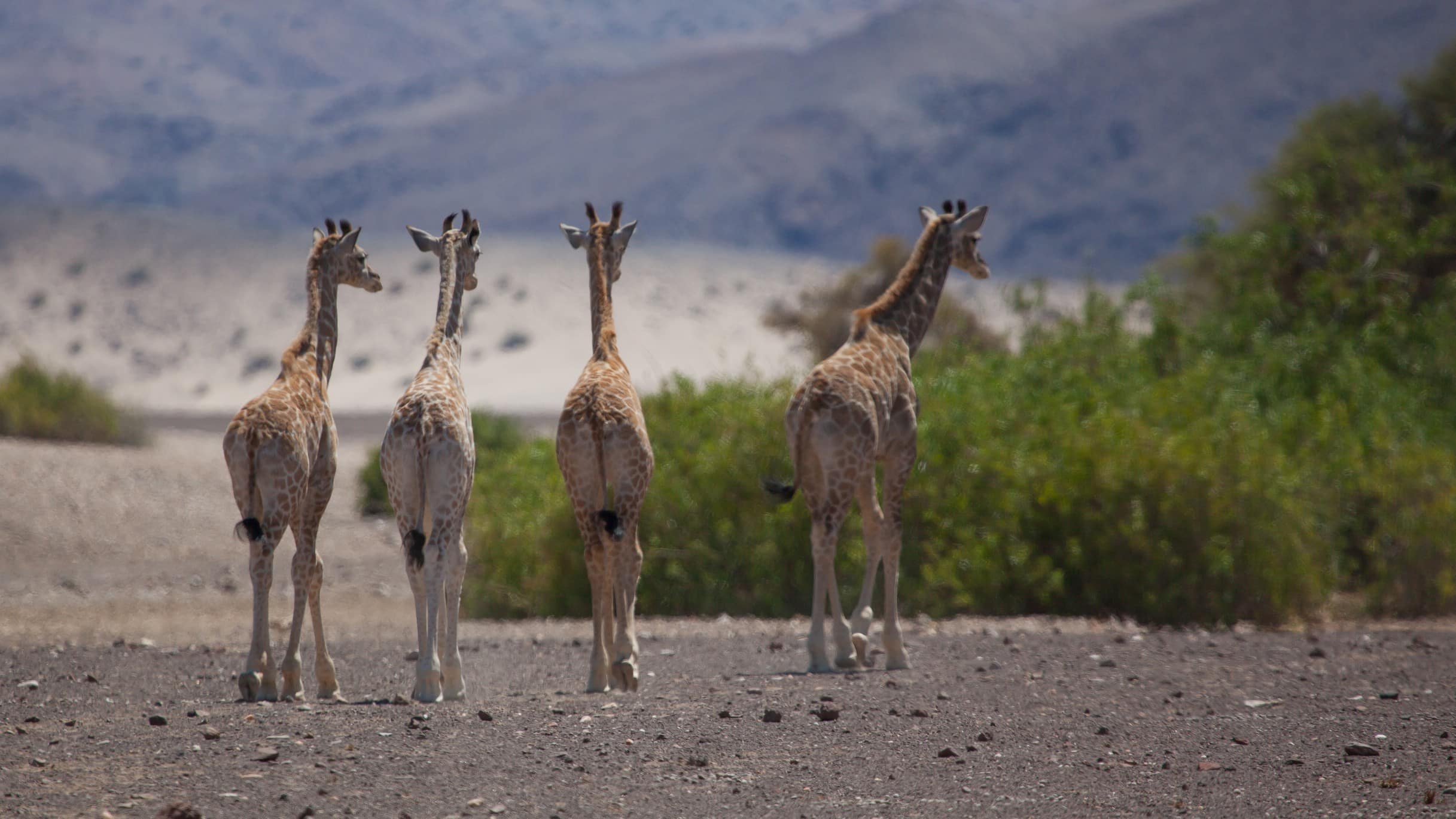
On 21 June we celebrated the seventh World Giraffe Day. The longest day (or night – depending on your home hemisphere) to celebrate the tallest animal is an annual event initiated by GCF. This year, we are raising awareness and funding for Operation Twiga V, the next giraffe conservation translocation to Pian Upe Wildlife Reserve in Uganda. During these difficult times of lockdowns and social distancing we were impressed with the creativity of the online community and overwhelmed by the giraffe love shared through posts, hashtags and personal stories and messages. To celebrate locally in Namibia, the GCF team turned the tables on each other and instead of tracking giraffe, we tracked our coworkers during a 15 km relay run/cycle through Windhoek in the shape of a giraffe. Not to be out done, some of the recently translocated giraffe that are sporting an ossi-unit in Namibia did their own version while exploring their new home in the !Doro Nawas Conservancy. Given the challenging terrain we will give the nod to the giraffe for best giraffe shape.
What did you do for World Giraffe Day?
Don’t worry, it is never too late to celebrate giraffe. Check out our revamped resource page for fun giraffe activities and information. (LINK) Feeling all your giraffe-love and seeing all your support and posts online throughout the year gives us the drive to continue our work to save giraffe in Africa. So keep up the good work and #StandTallForGiraffe!
But we are sure you can’t wait to find out what your adopted giraffe has been up to. In April, they were just as busy dodging flooding rivers and storms as our team. This time of year, they tend to move away from the riverbeds and spend a bit of time in the flood plains, mountains or one of the many valleys. In other words, sometimes there is a bit of luck involved to find some of your favourite giraffe. As the rivers dried out in May, many giraffe returned to the riverbeds and so far our team as spotted the majority of the 425 giraffe that roam the area. However, as hard as we may try, we can never find them all. Good news is we identified many new calves and most of the adopted giraffe and we are happy to report that they are all doing well.
Sightings
Coffee Bean
We had an amazing eight sightings of Coffee Bean this quarter and boy does he like to socialise. Each time we spotted him, he was in the company of different giraffe. Sometimes we find him hanging out with other boys, but often he seems to check in on the ladies and tries to make friends with the new calves. He must be part of the welcome committee in the Hoanib River. He often seems to be the first or last giraffe we see in the river during our trips and he is always a welcome sight for the team.
Dobby
Dobby was also very active this quarter. In early April we spotted him in the Khumib River as part of a large herd of 12 individuals. The group consisted mostly of large mature males and only one female giraffe. Maybe the flooding of the Hoarusib River had something to do with this meeting? Or the lone female in the group could have drawn the crowd. Later in the month, Dobby was off on a tour of the far north where we spotted him twice in 48 hours and covering some ground in a short time. We hope that we will be lucky and see him on his travels as he is such an active young guy.
Eros
Eros is apparently not a fan of April fools’ jokes and was taking no chances when we saw him hiding alone in the Hoanib River on 1 April. Later in the month, we found him in his usual stomping grounds of the Mudorib River. He was visiting some female giraffe at the time and looking quite content in their company.
Kaoko
Kaoko found a dry part of the Hoarusib River to enjoy some tasty Leadwood tree and giraffe company. We saw her in the company of several different groups of giraffe and she seems to enjoy spending time with other females and their young calves. Giraffe will often creche their young (AKA drop them off at day care). They leave them with other females or subadults while they take a break for foraging or maybe just some personal mommy time. We have not seen any signs of pregnancy and we don’t think Kaoko has had a calf yet, but she may be practicing her skills in preparation for the future.
Kunene
We finally caught up with Kunene at the end of April. She was still far West in the Skeleton Coast National Park and in the company of nine other giraffe – mostly females and their offspring. As a young adult female, she may also be practicing her mothering skills. We are confident we will see her with a calf someday in the future. Until then she can just be a favourite Auntie.
Monkey
Monkey gave us the slip this time, but that is not surprising, given her active roaming. Like many other giraffe, she could have moved up into the mountains around the Hoarusib River during rainy season or maybe she was just playing her favourite game of “Hide from the researchers on the other side of the river”. Now that the rivers are drying up again, we expect to see her and the other giraffe return to the Hoarusib River plains over the next few months. We will tell her you say “Hi”!
Muffin
Oh dear, sweet, Muffin. Where did you go? It has been a long time since we have seen him. A recent online comment wished we had a ossi-unit on him. In some ways we do too, but a young active male like Muffin would likely lose it in a necking fight. Plus, we would still have to find him to put it on. Given that he likes to wander to the southernmost part of our survey area, we suspect that he now lives in the Palmwag Concession and probably does what all males do best: clocking lots of miles roaming for mates. Fingers crossed we will see him again one day.
Windy
Our girl Windy has come out of seclusion and was spotted several times back in her home base of the Hoanib River. Sadly, we never saw her calf and her once full looking udder does not show any signs of lactating anymore. Unfortunately, we have to assume that her calf did not survive. However, the team is happy to report that Windy looks healthy and shows good normal giraffe behaviour as she hangs out with her gal pals FTD, Coffee Girl, and H Rocket. There are many possible reasons for her calf not to survive. The two main ones could be predation as there are several prides of lion roaming the Hoanib River area again, or as you may remember she is at least 22 years old, which might be an indicator that she is reaching the end of her reproductive abilities. She continues to be a welcome sight and always offers a bit of sass to the team for her photos.
Winky Wonk
Winky Wonk is probably still roaming the wider area in search for female company. With is uneven ossicones, he should not to be confused with Wonky or Willy Wonka who also have slightly askew ossicones. When male giraffe have a bent or broken ossicone they were likely injured during a necking battle. Male giraffe fight for dominance and breeding rights with the ladies. These battles can be tough and at times result in serious injuries. A broken ossicone and scratches can be considered minor injuries and typically heal well. Sometimes they result in ‘wonky’ ossicones as they set in the position they are left in. We are sure that if you asked Winky Wonk he would respond: “You should see the other guy!”. We last spotted him mid 2019, so we are optimistic we will see him again this time of year as he makes his rounds.

No one could predict that COVID-19 would bring 2020 to a grinding halt. No one knows what the future will bring and what lies ahead for us all? But you can rest assured that we at GCF continue to do our part for the future of giraffe, our environment and our communities. We are in the lucky position to continue with much of our work to save giraffe in Africa because of our amazing team and your generous support! We can’t thank you enough. Stay safe, stay strong, and practice patience and kindness to each other. We look forward to keeping you updated about our work and your giraffe adoptees. Here is to hoping that our next update comes at a time when life feels a little bit more ‘normal’ again.
Thanks again for your support.
You continue to make giraffe conservation in north-western Namibia and throughout Africa a reality!
Get Involved, Stay Involved
Give
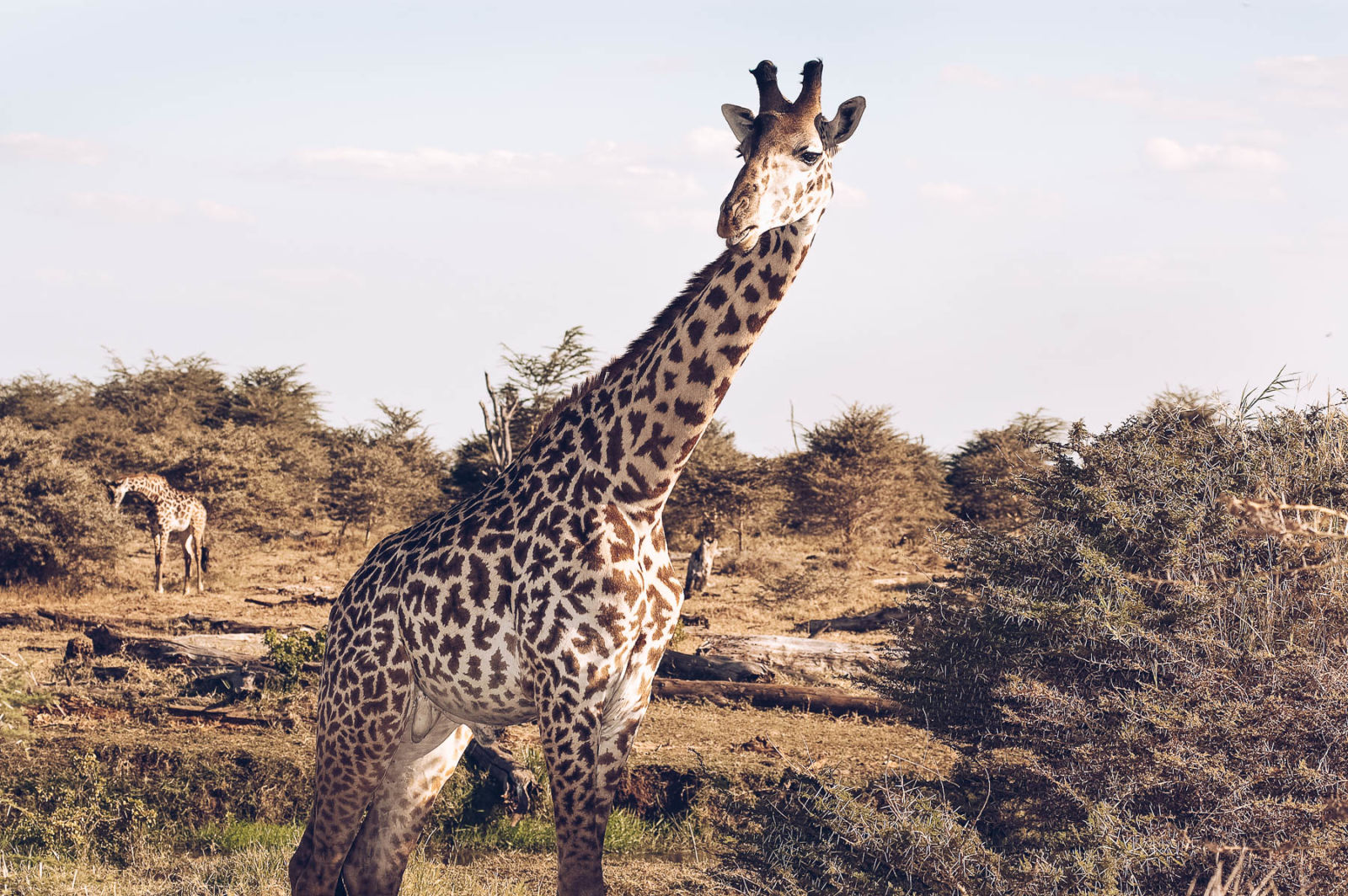
Donations are the bread-and-butter of our conservation work.
Your donations directly contribute to our ability to ensure a sustainable future for giraffe in Africa.
Adopt
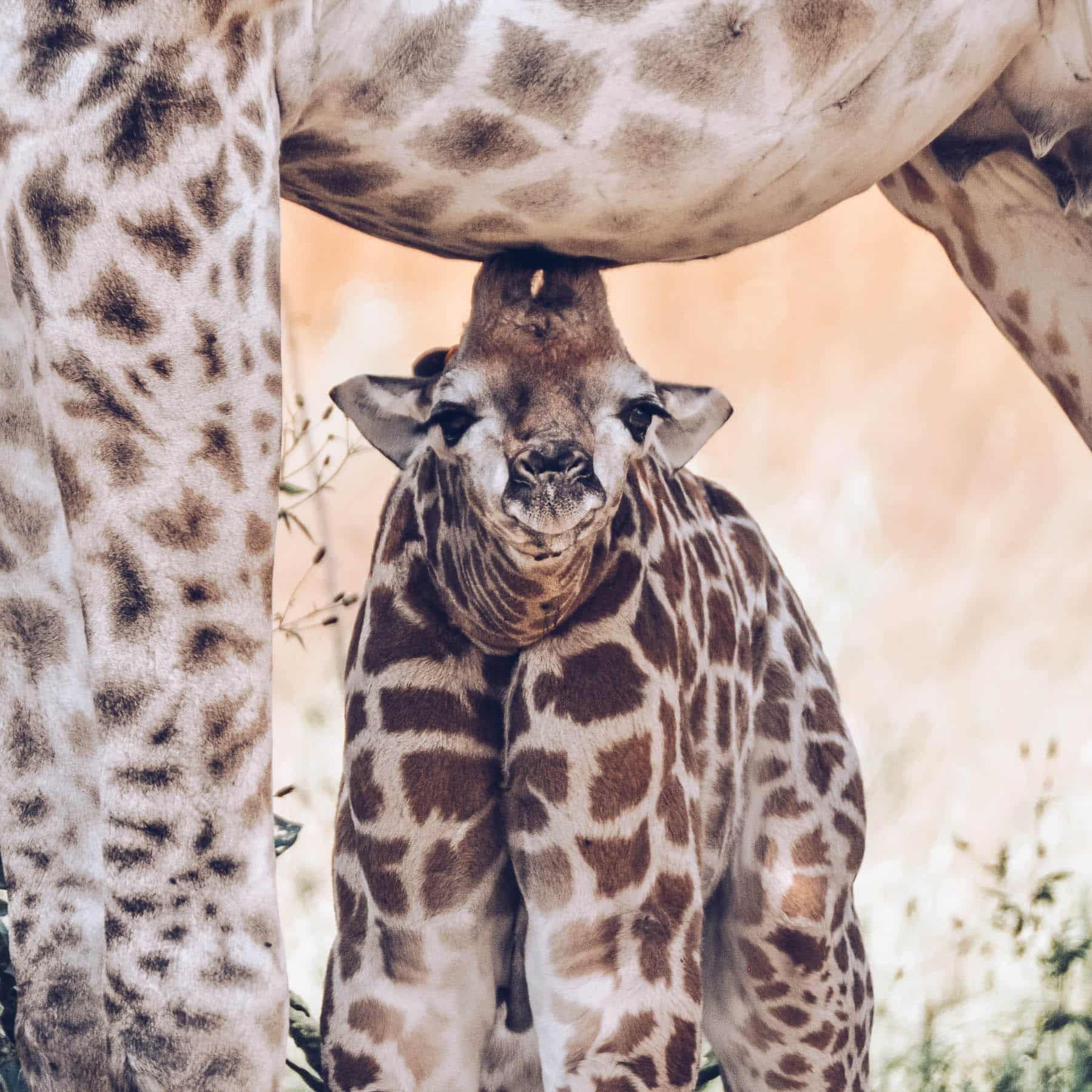
Giraffe Adoptions give you a personal connection to GCF’s work.
Much like donations, adoptions directly fund our conservation work.
Spread the Word
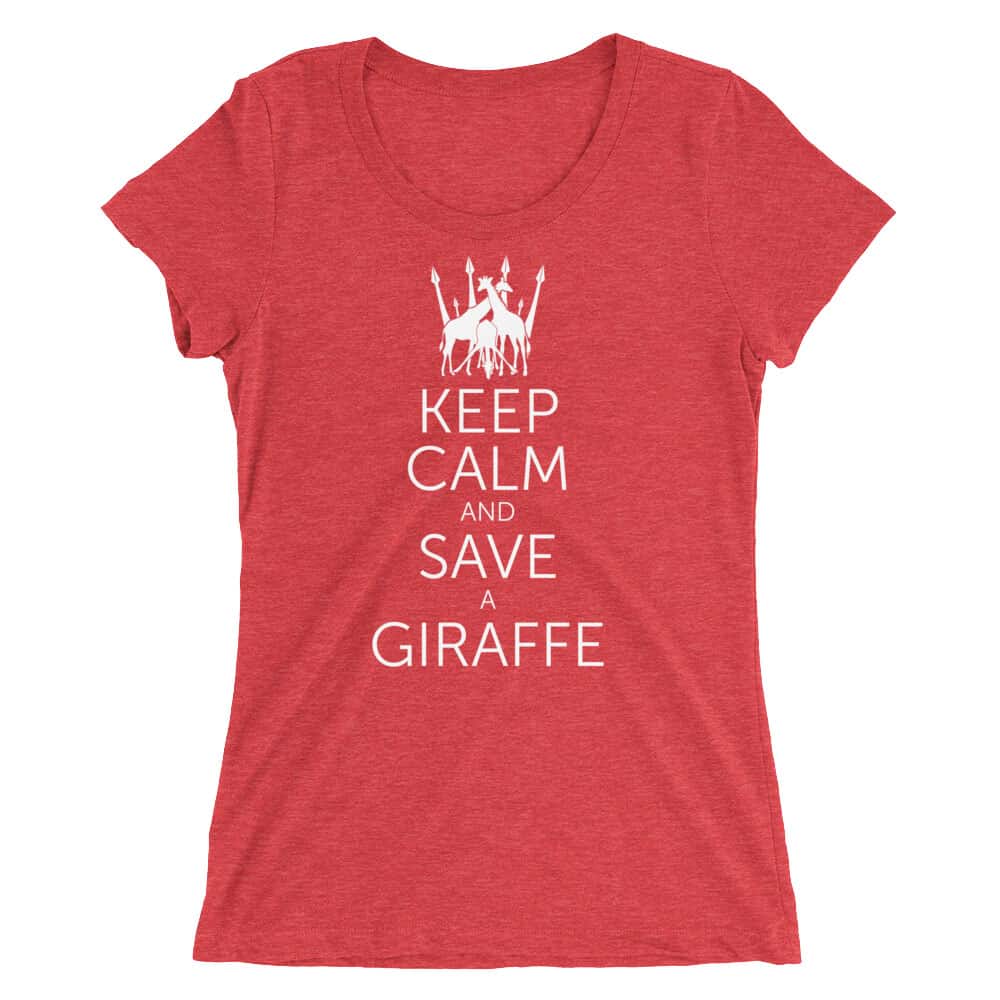
Wear our official apparel to support our work, and our message.
By buying official GCF gear, you’re supporting our work in two ways:
- You are literally wearing the message to help spread the word about giraffe endangerment.
- Funds from each purchase directly support our conservation work in Africa.

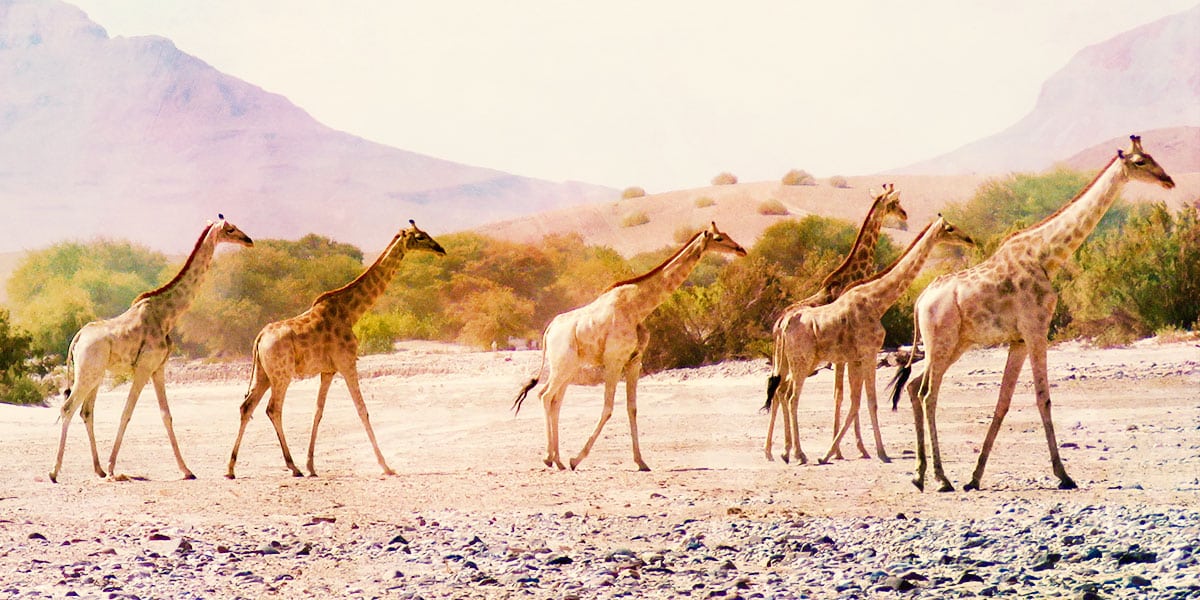

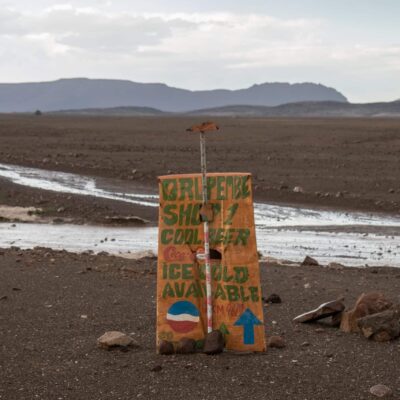
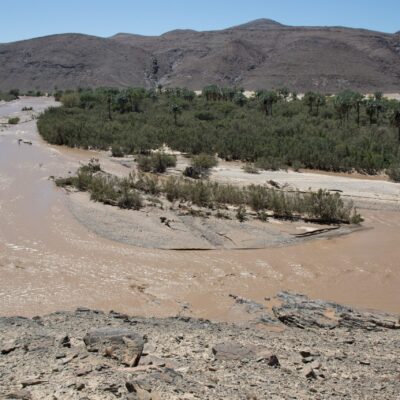

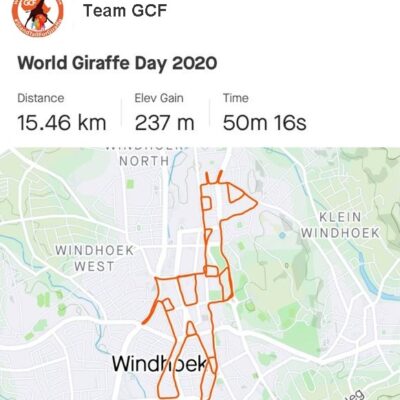
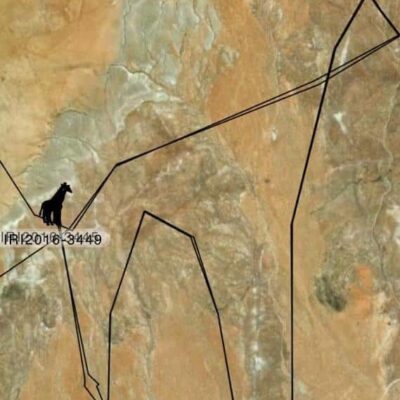
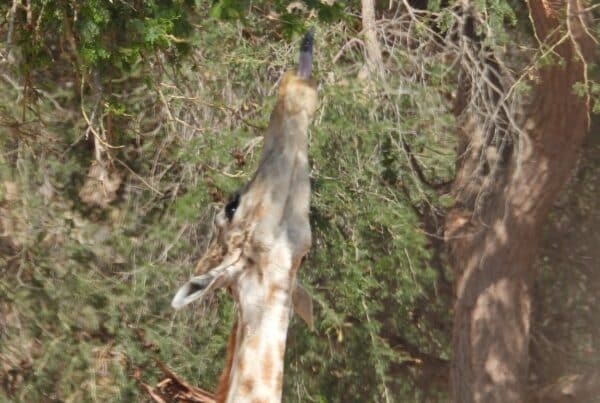

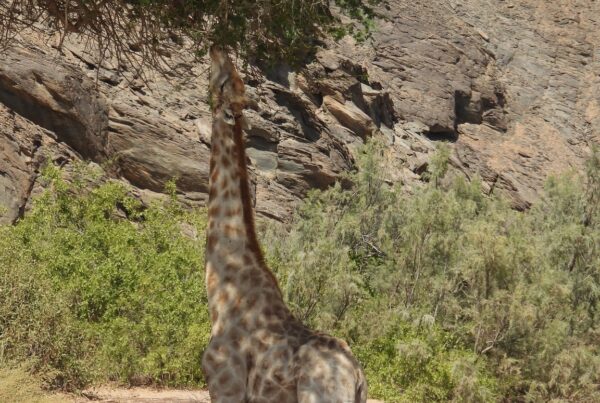



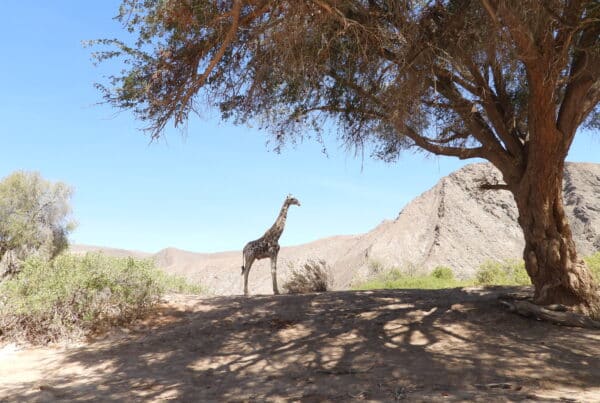
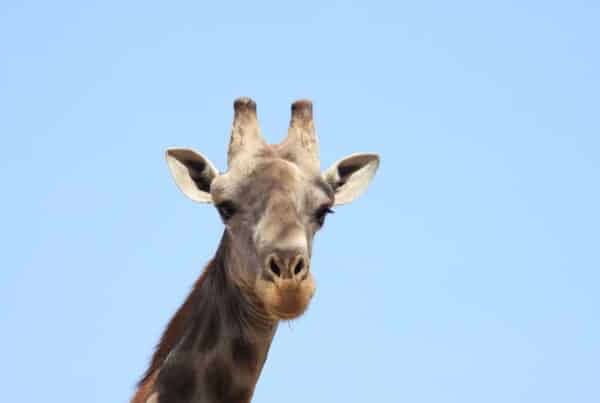



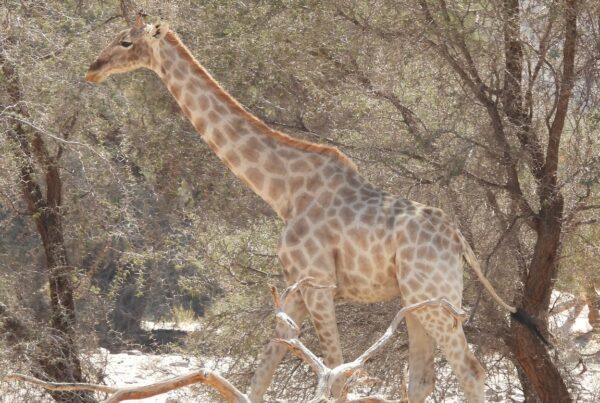
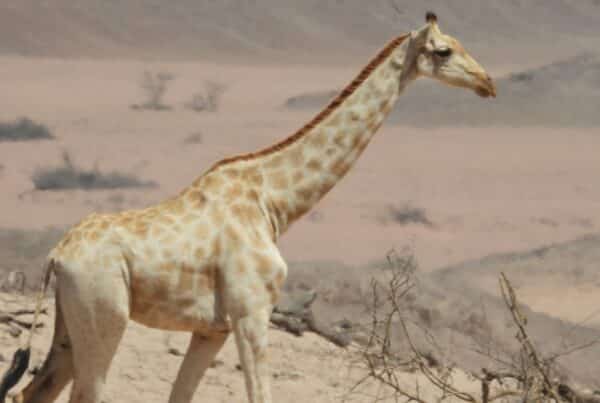
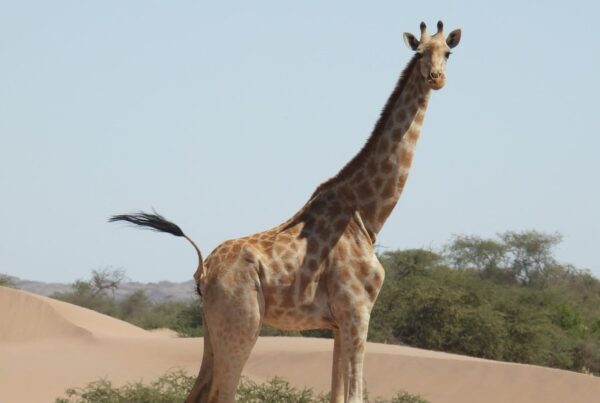




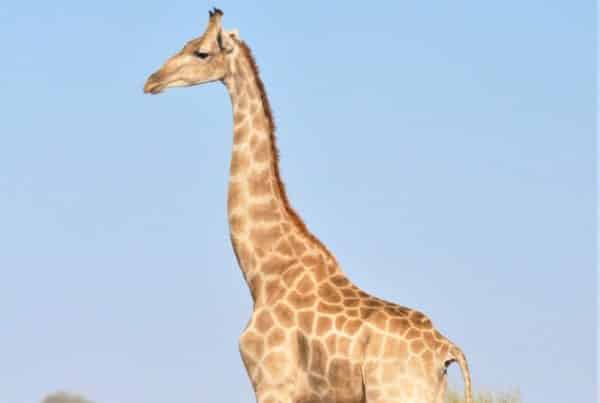


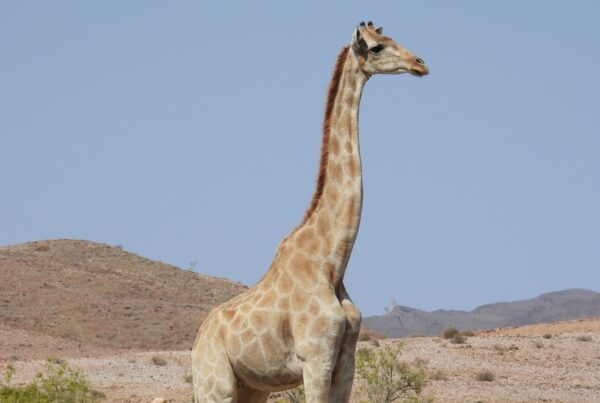


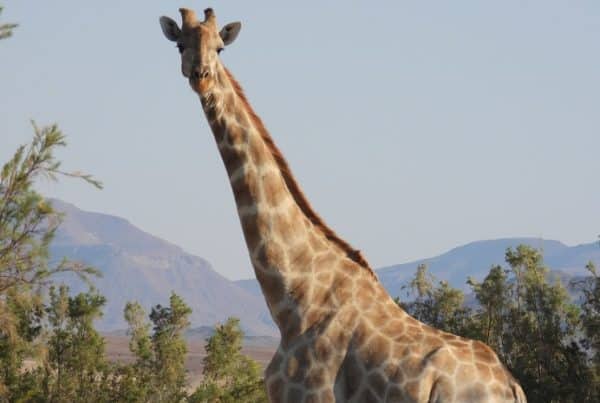
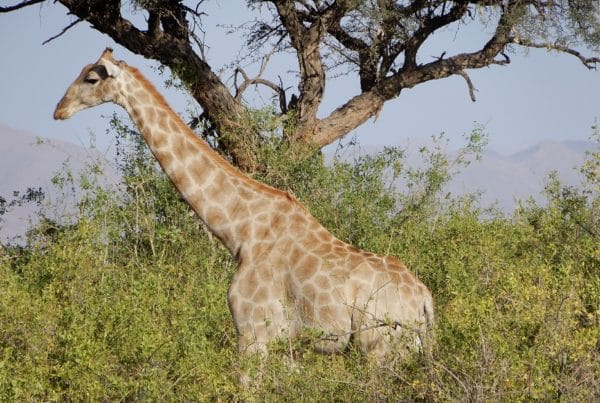
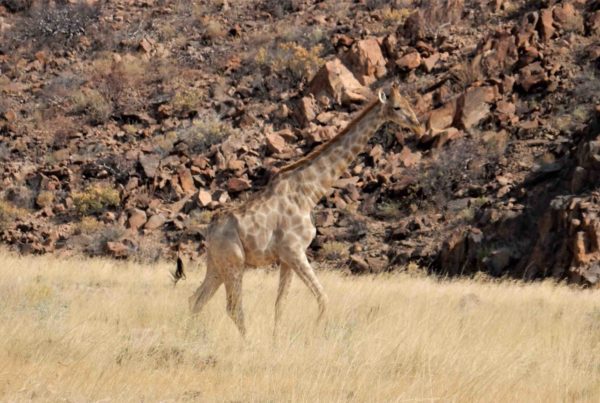
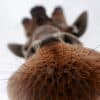
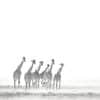


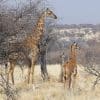

Hello,
I received a giraffe adoption as a gift from a friend but I am having a hard time viewing my “adoptee”. Can you kindly explain how this works?
Cheers,
Stephanie Martz (smartz15)
Hi Stephanie, sorry to hear that. Please email us to [email protected] and explain the problems you are experiencing. In the meantime, maybe also try using a different device or browser.